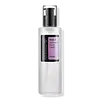What's inside
What's inside
 Key Ingredients
Key Ingredients

 Benefits
Benefits

 Concerns
Concerns

 Ingredients Side-by-side
Ingredients Side-by-side

Water
Skin ConditioningPropylene Glycol
HumectantMandelic Acid
AntimicrobialButylene Glycol
HumectantMelaleuca Alternifolia Leaf Oil
AntioxidantBeta-Glucan
Skin ConditioningOrchid Root Extract
HumectantPanthenol
Skin ConditioningCentella Asiatica Extract
CleansingSodium Hyaluronate
HumectantHydrolyzed Yeast Protein
Skin ConditioningDisodium EDTA
Potassium Glycyrrhizinate
Skin ConditioningCalendula Officinalis Flower Extract
MaskingAllantoin
Skin ConditioningAmmonium Glycyrrhizate
MaskingAesculus Hippocastanum Extract
AntioxidantWater, Propylene Glycol, Mandelic Acid, Butylene Glycol, Melaleuca Alternifolia Leaf Oil, Beta-Glucan, Orchid Root Extract, Panthenol, Centella Asiatica Extract, Sodium Hyaluronate, Hydrolyzed Yeast Protein, Disodium EDTA, Potassium Glycyrrhizinate, Calendula Officinalis Flower Extract, Allantoin, Ammonium Glycyrrhizate, Aesculus Hippocastanum Extract
 Reviews
Reviews

Ingredients Explained
These ingredients are found in both products.
Ingredients higher up in an ingredient list are typically present in a larger amount.
Butylene Glycol (or BG) is used within cosmetic products for a few different reasons:
Overall, Butylene Glycol is a safe and well-rounded ingredient that works well with other ingredients.
Though this ingredient works well with most skin types, some people with sensitive skin may experience a reaction such as allergic rashes, closed comedones, or itchiness.
Learn more about Butylene GlycolPanthenol is a common ingredient that helps hydrate and soothe the skin. It is found naturally in our skin and hair.
There are two forms of panthenol: D and L.
D-panthenol is also known as dexpanthenol. Most cosmetics use dexpanthenol or a mixture of D and L-panthenol.
Panthenol is famous due to its ability to go deeper into the skin's layers. Using this ingredient has numerous pros (and no cons):
Like hyaluronic acid, panthenol is a humectant. Humectants are able to bind and hold large amounts of water to keep skin hydrated.
This ingredient works well for wound healing. It works by increasing tissue in the wound and helps close open wounds.
Once oxidized, panthenol converts to pantothenic acid. Panthothenic acid is found in all living cells.
This ingredient is also referred to as pro-vitamin B5.
Learn more about PanthenolSodium Hyaluronate is hyaluronic acid's salt form. It is commonly derived from the sodium salt of hyaluronic acid.
Like hyaluronic acid, it is great at holding water and acts as a humectant. This makes it a great skin hydrating ingredient.
Sodium Hyaluronate is naturally occurring in our bodies and is mostly found in eye fluid and joints.
These are some other common types of Hyaluronic Acid:
Learn more about Sodium Hyaluronate